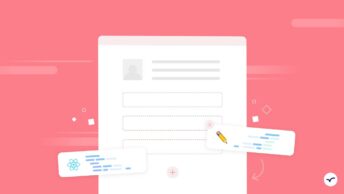If you’re looking for .NET developer jobs, you’ll need more than just your technical skills. For starters, along with a solid resume and software developer portfolio, getting the job you want will be tough without a well-crafted .NET developer cover letter.
While this may seem like a secondary aspect of your job search, it’s actually vital — so you would do well not to neglect your .NET engineer cover letter.
With that in mind, we’re here with a quick guide on how to write one properly, along with some useful tips and a sample .NET cover letter you can use as a reference.
Writing a Cover Letter for .NET Developer Jobs 101
For .NET jobs — or pretty much any software engineering job — a cover letter remains an essential part of any job application. This is especially true if you’re looking to compete for increasingly popular remote positions.
Unfortunately, one of the most common mistakes people make while applying for a .NET job is not paying enough attention to their cover letter. Sure, your resume is important because it displays all of your technical skills. But the cover letter is your chance for a more personal touch. It can help set you apart from the countless similar applications and generic resumes your recruiter has likely received.
Speaking of setting yourself apart, diversifying your skillset can also make a significant difference. In the competitive field of software development, being versed in multiple programming environments is a notable advantage. For instance, Magento is another platform that’s gaining traction in the e-commerce sector. By exploring Magento development services, professionals can not only broaden their expertise but also enhance their marketability, opening doors to a plethora of job opportunities across various industries. The dynamic nature of Magento allows developers to create customized, scalable solutions, ensuring that e-commerce businesses are not just functional but also tailored to provide unique customer experiences.
It also gives you an opportunity to showcase your potential contribution to the new company in greater detail. And if you utilize it properly, the cover letter will let some of your personality shine through in a way that resumes really can’t.
Naturally, you didn’t become a .NET developer for your creative writing skills — so writing a cover letter may be challenging. After all, you need to provide a concise description of your skills and previous work duties to a non-technical recruiter in an easily understandable way. And, simultaneously, the cover letter should still showcase your tech skills in a way that will be impressive to any CTO or engineering lead who might pick it up further in the recruitment process.
If all of that seems too difficult, don’t worry — we’ll help you avoid being overlooked by recruiters by breaking down the contents of a great .NET developer cover letter and giving you some advice and tips on standing out amidst countless other competing job candidates.
Before you go through our step-by-step guide, take a look at the example cover letter for .NET developers below for some inspiration!
Read More: Got a Busy Schedule? Here’s How to Make Time to Continue Improving Your Software Developer Skills
Sample .NET Developer Cover Letter for Reference
If you’re looking for a .NET developer job, here’s a sample cover letter so that you have an idea of what yours should contain. Use this to inspire your own, but just remember to custom-tailor the contents for every individual application for a better chance of success. When you’re ready to take the next step, don’t hesitate to reach out and hire a .NET developer who can contribute their expertise to your team.
Loretta E. Jones Full Stack .NET Developer 4696 Wines Lane Houston, TX 77056 June 10, 2022 Lisa R. Rivera Senior Technical Recruiter DigitalHold 4664 Lynn Ogden Lane Beaumont, TX 77701 Dear Lisa: After I ran into your job posting for a senior .NET developer at DigitalHold and reading the job description, I immediately realized that I want to apply right away. As a born-and-bred Texan with a master’s degree in computer science and plenty of experience working with .NET Core 3, .NET 4, .NET 5, and ASP.NET Core web apps, I believe this position at your company is the perfect next step for my career. I am a motivated, results-oriented individual with an extensive background in .NET development and the expertise necessary to take initiative and lead your next project to its successful conclusion. At my previous company, I mainly worked on the development of new software systems using .NET 4.0, C#, and SQL. Besides that, I managed and updated existing products while providing technical support to my coworkers. I’ve also helped improve programming procedures, resulting in a 15% improvement in the effectiveness of the entire software development process. Furthermore, I’ve communicated with clients to ensure all of their requirements were met in entirety. Also, I’ve trouble-shot and fixed any bugs and threads. Considering all of this, I believe I’d be an excellent fit for tackling the challenges of your particular open position. I’d highly appreciate the chance to talk to you more and share my potential contributions to DigitalHold in more depth. Thanks for considering my application, and I look forward to hearing from you! Sincerely, Loretta E. Jones
Now that you’ve gotten a glimpse into how great .NET developer cover letter examples should look, here’s our step-by-step guide to writing a solid version of your own.
Read More: Here Are 21 of the Best Online Developer Communities to Join in 2022
How to Write a .NET Developer Cover Letter
As we’ve mentioned above, even an entry-level .NET developer job is pretty technical. So now we’re going to show you how to do it properly in a methodical, step-by-step manner.
You’ve got a few things going for you here. First, once you actually learn how to do it, writing a cover letter for a .NET developer is fairly simple — as long as you include all the right elements. However, if you’re looking for a more streamlined and efficient approach, consider collaborating with a .NET software development company that specializes in crafting customized solutions, including cover letters, tailored to your specific needs.
Second, the best cover letters aren’t that long. Keep it short and sweet, and you’re less likely to bore recruiters with your “prose.” Just stick to four paragraphs at most and keep the focus on what benefits your past experience can bring to your new employer.
Also, most cover letters are written directly in the email body, rather than being sent as separate attachments. Of course, this may vary depending on the recruitment process at each individual company — but in most cases, the cover letter will be an email and you’ll include your resume as its attachment.
If so, just make sure you include the position you’re applying for in your email’s subject line — you want to make your intent clear to any potential recruiters right away. And don’t forget to send the resume as an attachment, too.
With all of that in mind, here’s a guide on writing a cover letter for a .NET engineer:
1. Some quick preparations
While our sample cover letter above may give you a good idea in which direction you need to go with your writing, you’ll also need to make some additional preparations before you start working on your own letter.
First, you should find the original job description — most likely from the online job ad you’ve read — and keep it open in another tab as you write. It’s going to be useful as a reference for customizing your letter to the specific job and company in question.
After that, do some research on your potential employer. You want to know what they generally do, their previous major projects, and their vision and direction for the future. Remember, it’s vital to customize your letter for the specific .NET developer position and the company — and this will help you do it right.
Finally, remember the point of your cover letter. You’re not supposed to repeat the information you’ve already included in your resume — that would be nothing more than a waste of everyone’s time. Instead, view the cover letter as an opportunity to showcase your past accomplishments in more detail or to include some information you might not have included in the resume.
Read More: How to Become a Software Engineer: Education, Steps & Tips for Success
2. The header
The first part of the cover letter is the header, and it’s where you’ll include all of your (accurate and up-to-date) contact information. This is vital if you actually want to receive a reply from your recruiter.
When it comes to the formatting of your header, you’ve got two options. You can use the standard business letter formatting we’ve used in the sample letter above. Alternatively, if you’re using some kind of template for your resume, you can use the same one for your cover letter and create a cohesive visual package.
Regardless of the formatting, you need to list some basic but crucial information:
- Your first and last name
- Email address, and
- A couple of links to your LinkedIn, StackOverflow, or GitHub.
All other info should be found in the resume, so there’s no need to repeat it.
Once you’ve written out all the contact information, add a line break followed by today’s date. After that, use another line break before putting in the addressee’s contact details: the company name, their personal name, their job title, and the company’s physical address.
3. The introductory paragraph
When you’ve finished your heading, it’s time to start writing the actual letter. Follow the heading with a salutation that will open the letter’s written portion. If you know the name of the company’s HR manager or recruiter, use “Dear Namehere” — this kind of personal touch is far more compelling than something generic that all the other candidates will likely use.
After this, it’s time to work on the introductory paragraph. This part is supposed to help you achieve a couple of things:
- Compel the recruiter to read more and learn more about you as a candidate,
- Introduce yourself and explain why you want to apply in the first place, and
- Discuss the specifics of the position that were the most attractive to you.
Read More: How to REALLY Get a Job as a Self-Taught Developer
4. The body of your .NET developer cover letter
Next up, we’ve got the main portion of your .NET developer cover letter — the part that’s supposed to serve up your career highlights to recruiters.
This part of the letter should:
- Show what makes you the perfect candidate for the position,
- Show how your qualifications meet or exceed the recruiter’s expectations,
- Demonstrate the relevant accomplishments that show you’re the best possible candidate, and
- Use numbers (dollar amounts, percentages, etc) to prove your impact as an employee.
If you can, share a previous engineering project that you contributed to. Help recruiters and tech leads understand what makes you not only a great .NET developer but also the perfect fit for their company. You can do this by connecting your previous work achievements and experience with the company’s .NET developer job description.
5. The end of the .NET cover letter
Finally, we arrive at the end of your cover letter. Its primary purpose is to exchange some niceties with the recruiter and thank them for considering you. Also, make sure to remind them to freely reach out with further steps or any questions they might have.
In the end, wrap everything up with a nice little “Sincerely,” followed by your full name. Don’t overthink or overwrite this part — there’s really not much else to it.
Read More: How To Use Social Media Thought Leadership To Level Up Your Developer Career
Top .NET Developer Cover Letter Tips To Keep In Mind
As you might’ve concluded from our .NET developer cover letter sample above and the subsequent guide, the process is pretty straightforward. However, there are still a couple of best practices you should keep in mind while writing if you want your cover letter to really stand out.
1. Avoid repeating your resume
This is one of the most often-repeated mistakes, especially among junior .NET developers. And while we’ve said it before, it’s worth (ironically) saying again — don’t repeat the information from your resume!
Most job seekers are a bit confused about what information goes in their resume, and what goes in their cover letter. Seeing as the resume is supposed to outline your skills and previous jobs, is there really anything more left to say in the cover letter?
Of course, the answer is a resounding “yes”. Remember, your resume shouldn’t be longer than a page or two. And its goal is to get your foot through the door of the hiring process — it’s not there to tell the recruiter your life story.
On the other hand, the .NET developer cover letter gives you some extra room to discuss particularly relevant accomplishments and experiences in more detail.
Read More: What’s the Difference Between a Software Engineer and a Developer?
2. Use keywords to draw in recruiters
We’ve already mentioned it’s important to draw on the specific job description you’re applying to while writing your cover letter. And this is where the job ad is useful — go through it and find some “keywords” that the recruiter will likely want to see in your cover letter and resume.
For instance, if the job description mentions JavaScript, you’ll probably want to do the same when putting together your cover letter. Here are some other technical keywords and skills for .NET developers:
- Microsoft SQL Server
- JSON
- XML
- MVC
- Bootstrap
- jQuery
- ASP.NET Core 5.0 / 6.0
- .NET
- C#
- F#
- C++/CLI
- PHP
- Laravel
- WCF
- Umbraco CMS
- Microsoft Visual Studio
- Visual Studio Code
- .NET on Windows Arm64
- Visual Basic .NET
- MySQL
- JavaScript
- Object-Oriented programming
Of course, technical terms aren’t the only keywords you should include — put in the company’s name, as well as the name of your hiring manager (if you can find it).
3. Use tangible metrics
While describing your previous accomplishments, try to quantify them as much as possible. Instead of merely reciting your previous job duties, try to prove how they’ve brought practical value to your previous projects and employers.
Use numbers whenever you can — they sound impressive, and they make your previous accomplishments seem more realistic and less like you’re ticking off boxes while writing a generic letter.
Read More: How to Negotiate Your Salary as a Remote Developer
4. Do your homework
Every company likes to hire people that are passionate about the company’s work — so make sure they view you as a fan. Do some research on the company’s previous work, especially their current opportunities, goals, and obstacles.
Then, you can use this information to depict yourself as the perfect candidate: one who’s in line with the company’s values and culture, while also having the skills to help them overcome their obstacles.
5. Include soft skills as well
Don’t forget to highlight, either overtly or covertly, some soft skills as well, such as time management, problem-solving skills, your ability to analyze data, and so on. This is particularly true if these are specifically talked about in the .NET developer job description!
If you’re applying for a senior .NET developer position, you’re bound to have some managerial responsibilities as well. In that case, you’ll also want your employers to know you’ve got excellent communication, strong interpersonal skills, and solid leadership capabilities, among others.
Read More: How to Write a Thank-You Email to Follow Up After an Interview
Wrapping Up
We hope our tips, layout, and sample letter will help you write an effective and efficient .NET developer cover letter. Let us know if you have any more questions, and we wish you all the luck in the world in your .NET job search and in your tech career!











